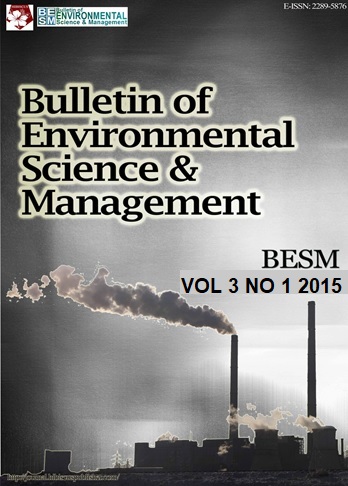Modelling the Growth of Moraxella sp. B on Monobromoacetic acid (MBA)
DOI:
https://doi.org/10.54987/bessm.v3i1.258Keywords:
growth curve, mathematical model, monobromoacetic-degrading, Buchanan-three-phase, statistical analysisAbstract
Monohalogenated acetic acids have been widely used in industry and agriculture as precursor to
chemicals and as herbicides, respectively. Bioremediation of xenobiotics have been touted as a
more economical and feasible method compared to physical and chemical approaches. In this
work, we model the growth of Moraxella sp. B on monobromoacetic acid (MBA) from published
literature to obtain vital growth constants. These growth constants can only be accurately
obtained from mathematical modelling of the growth curves using various available primary
models such as logistic, Gompertz, Richards, Schnute, Baranyi-Roberts, Von Bertalanffy,
Buchanan three-phase and more recently Huang models. The Buchanan three-phase model was
chosen as the best model based on statistical tests such as root-mean-square error (RMSE),
adjusted coefficient of determination (R2), bias factor (BF), accuracy factor (AF) and corrected
AICc (Akaike Information Criterion). The constants obtained indicated that the lag period was
increased as the concentrations of MAB was increased. In addition, the growth rate was severely reduced at high concentrations of MAB indicating substrate inhibition. Novel constants obtained from the modelling exercise would be useful for further secondary modelling implicating the effect of media conditions and other factors on the growth of this bacterium on MAB.
Published
How to Cite
Issue
Section
License
Authors who publish with this journal agree to the following terms:
- Authors retain copyright and grant the journal right of first publication with the work simultaneously licensed under a Creative Commons Attribution License (http://creativecommons.org/licenses/by/4.0) that allows others to share the work with an acknowledgement of the work's authorship and initial publication in this journal.
- Authors are able to enter into separate, additional contractual arrangements for the non-exclusive distribution of the journal's published version of the work (e.g., post it to an institutional repository or publish it in a book), with an acknowledgement of its initial publication in this journal.
- Authors are permitted and encouraged to post their work online (e.g., in institutional repositories or on their website) prior to and during the submission process, as it can lead to productive exchanges, as well as earlier and greater citation of published work (See The Effect of Open Access).


